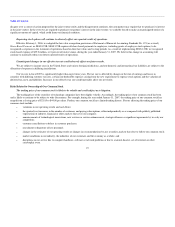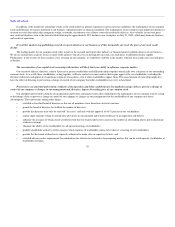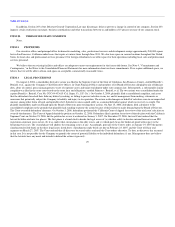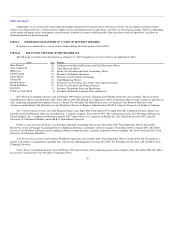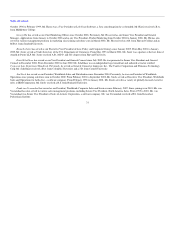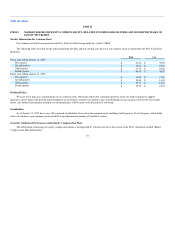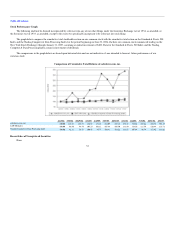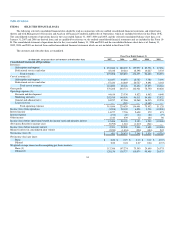Salesforce.com 2006 Annual Report Download - page 40
Download and view the complete annual report
Please find page 40 of the 2006 Salesforce.com annual report below. You can navigate through the pages in the report by either clicking on the pages listed below, or by using the keyword search tool below to find specific information within the annual report.
Table of Contents
terms range from one to 60 months. Our subscription and support contracts are noncancelable, though customers typically have the right to terminate their
contracts for cause if we materially fail to perform. We generally invoice our customers in advance, in annual or quarterly installments, and typical payment
terms provide that our customers pay us within 30 days of invoice. Amounts that have been invoiced are recorded in accounts receivable and in deferred
revenue, or in revenue depending on whether the revenue recognition criteria have been met. In general, we collect our billings in advance of the subscription
service period.
Professional services and other revenues consist of fees associated with consulting and implementation services and training. Our consulting and
implementation engagements are typically billed on a time and materials basis. We also offer a number of classes on implementing, using and administering
our service that are billed on a per person, per class basis. Our typical payment terms provide that our customers pay us within 30 days of invoice.
Cost of Revenues and Operating Expenses
Cost of Revenues. Cost of subscription and support revenues primarily consists of expenses related to hosting our service and providing support, the
costs of additional data center capacity, depreciation or operating lease expense associated with computer equipment, costs associated with website
development activities, allocated overhead and amortization expense associated with capitalized software. To date, the amortization expense associated with
capitalized software has not been material to our cost of revenues. We allocate overhead such as rent and occupancy charges based on headcount. Employee
benefit costs and taxes are allocated based upon a percentage of total compensation expense. As such, general overhead expenses are reflected in each cost of
revenue and operating expense category. Cost of professional services and other revenues consists primarily of employee-related costs associated with these
services, including stock-based expenses, the cost of subcontractors and allocated overhead. The cost associated with providing professional services is
significantly higher as a percentage of revenue than for our on-demand subscription service due to the labor costs associated with providing professional
services.
We intend to continue to invest additional resources in our on-demand application service and in our consulting services. The timing of these additional
expenses will affect our cost of revenues, both in terms of absolute dollars and as a percentage of revenues, in a particular quarterly period. For example, we
plan to increase the number of employees who are fully dedicated to consulting services. We have also obtained additional data center capacity on the west
and east coasts of the United States. We expect the annual cost of these resources to be significant.
Research and Development. Research and development expenses consist primarily of salaries and related expenses, including stock-based expenses, the
costs of our development and test data center and allocated overhead. We have historically focused our research and development efforts on increasing the
functionality and enhancing the ease of use of our on-demand application service. Our proprietary, scalable and secure multi-tenant architecture enables us to
provide all of our customers with a service based on a single version of our application. As a result, we do not have to maintain multiple versions, which
enables us to have relatively low research and development expenses as compared to traditional enterprise software companies. We expect that in the future,
research and development expenses will increase in absolute dollars as we upgrade and extend our service offerings and develop new technologies.
Marketing and Sales. Marketing and sales expenses are our largest cost and consist primarily of salaries and related expenses, including stock-based
expenses, for our sales and marketing staff, including commissions, payments to partners, marketing programs and allocated overhead. Marketing programs
consist of advertising, events, corporate communications and brand building and product marketing activities.
We plan to continue to invest heavily in marketing and sales by increasing the number of direct sales personnel in order to add new customers and
increase penetration within our existing customer base, expanding
37


